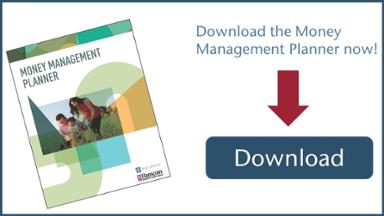I've had a sinking fund for years and I love it. What's a "sinking fund," you ask? It's simply a savings account you use to save money over time for a specific expenditure. In my case it’s a Holiday Club account that's changed the way I think about my holiday shopping. It covers the cost of presents, food, decorations, and entertaining. Now each year I can shop worry-free because I know I’ll have the money I need and come January, I won’t find a huge credit card bill in my inbox.
To make sure I'll have enough money for the holidays, I figure out what I think I’ll spend (based on the average of several past years’ expenditures) and divide that number by 10 to determine how much I put in the account January through October. I withdraw all the money in November and start the savings process all over again the following January.
Whether it’s your annual car insurance bill, your homeowner’s association fees, new back-to-school supplies and clothes for the kids, or a Caribbean cruise, your sinking fund can help you plan and save without going into debt.
Having a sinking fund for large or recurring expenses makes a lot of sense. It does take some planning, but it’s much easier to keep tabs on your money this way. If everything gets dumped into one big savings account, it’s harder to keep track of what’s coming in and going out and when. If done correctly, it should reduce your money-related stress because you know you’ll be able to cover your expected expenses.
With online banking, it’s easy to put this budgeting technique in place; you can even have multiple sinking funds if your financial institution allows for multiple savings accounts. (FYI: Hanscom FCU does!) Just make sure the accounts don’t have any fees or minimum balance requirements. And if you can, select a savings account that earns interest so you know your money is working hard for you. If you just want one sinking fund, our CU Thrive automated savings account may be the ticket for you; it pays an amazing rate of interest on savings from as little as $5 a month to $500 a month.
One last thing: Just because you set up a few sinking funds doesn’t mean you shouldn’t also have a separate emergency fund. Your emergency fund is money you set aside for unknown or unexpected expenditures that come up. Experts recommend having three to six months worth of expenses in this kind of account. If you don't have emergency savings, focus on building that fund up before saving for the fun stuff.
Take a few minutes to think about what kind of sinking funds would be most beneficial for you. To open a new account, just click on the JOIN link at the top of our home page, then set up automatic transfers on a schedule that’s convenient for you. Welcome to the world of stress-free finances!
Others are reading:














Comment